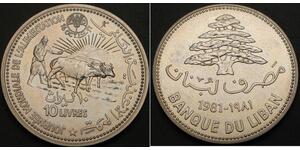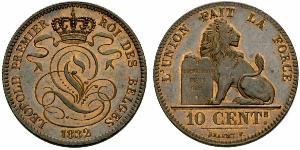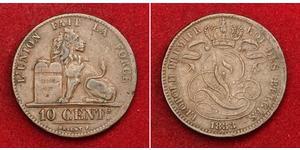(售价 $61.0)
1520/1974, Bohemia, Louis II/Counts of Schlick. Silver Joachim Thaler. Restrike!
Mint Year: dated 1520, struck 1974. Reference: Davenport 8138 var. (here a Restrike!) Denomination: Joachim Thaler (Joachimsthaler) - Restrike! Condition: Struck with matted dies, faint hairlines (possibly cleaned in the past), otherwise UNCirculated! Material: Silver (.800) Weight: 24.59gm Diameter: 42mm
Obverse: Saint Joachim standing dividing. Coato-of-arms of the Counts of Schlick below. Double-bands of legends around. Outer Legend: AR[MA] DOMI[NOR]:SLI[C]:STE[FANI]:ET:FRA[TR]:COM[ITU]: D:B[ ASATAUNI Inner Legend: LUDOVICUS:PRIM:D[EI]: GRACIA:R[EX]:BO[EMIE]
Reverse: Crowned Bohemian lion left. Legend: + LVDOVICVS + PRIMVS + DEI + GRACIA + REX + BOEM + 1520
Under Count Stephen in 1516 rich deposits of silver ore were discovered in the Bohemian basin. It rapidly became at that place a thriving mining town. In 1517 the site was renamed Jachymov - in analogy to the Erzgebirge mountain places named after saints Marienberg, Annaberg and Josef village. In 1520 Stephen and his brothers were awarded by the Czech parliament the right to mint silver coins, with one side the coat of arms and a representation of the Bohemian king (lion) and on the other side the holy Joachim with the coat of arms of the Counts of Schlick. It is noteworthy that the document still preserved, was written in Czech. It is refered to as the 'St. Joachim Thaler'. This guldengroschen enjoyed tremendous popularity and its name was quickly shortened to thaler, the name by which it was continued to be used over the next four centuries. The name still lives on today in the American dollar and the Russian ruble.
By 1518, guldiners were popping up everywhere in central Europe. In the Kingdom of Bohemia, then ruled together with Hungary by Louis II of the Jagiellonian dynasty, a guldiner was minted— of similar physical size but slightly less fineness—that was named in German the Joachimsthaler, from the silver mined by the Counts of Schlick at a rich source near Joachimsthal (St. Joachim's Valley, Jáchymov – now in the Czech Republic) where Thal (Tal) means "valley" in German. Joachim, the father of the Virgin Mary, was portrayed on the coin along with the Bohemian lion. Similar coins began to be minted in neighbouring valleys rich in silver deposits, each named after the particular 'thal' or valley from which the silver was extracted. There were soon so many of them that these silver coins began to be known more widely as 'thaler' in German and 'tolar' in the Czech language.
From these earliest 'thaler' developed the new thaler – the coin that the Holy Roman Empire had been looking to create as a standard for trade between the regions of Europe. The original Joachimsthaler Guldengroschen was one ounce in weight (27.2 g). The Empire's Reichstaler (1566 to 1750) was defined as containing 400.99 grains of silver (equal to 25.984 g) and became the coin of account of the whole Empire.
10 Centime 比利时 銅 利奥波德一世 (比利时) (1790 - 1865)
本组有 8 钱币 / 8 售价
⇑
























